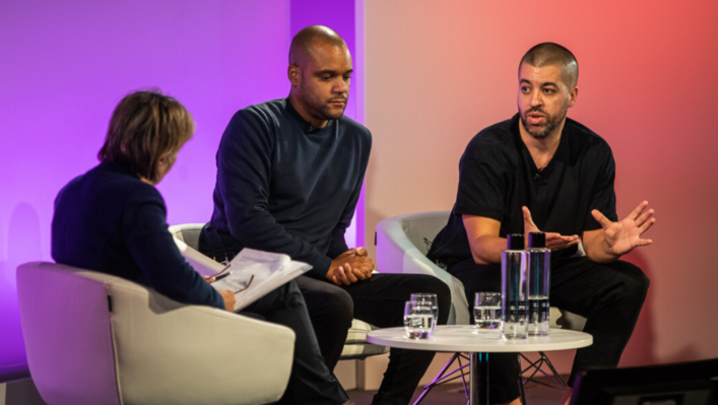Drama specialist Sara Deane and documentary cinematographer Mike Robinson discussed the tricks of their trade at this year’s RTS Student Masterclasses. The two directors of photography were in conversation with factual entertainment executive Nell Butler, who created the hugely popular format Come Dine with Me.
Training: Sara Deane was a member of the Children’s Film Unit, before studying at Bournemouth Film School: “I was a clapper loader [second assistant camera] for five years and … [during that time] still shooting shorts because I knew I waned to be a director of photography. I [then studied at] the National Film and Television School and graduated about 10 years ago.”
“I’m self taught,” revealed Mike Robinson, who went to art school in the early 1980s. “I have no training in camera work… I blagged my way in as a camera assistant… and I learned on the job.” Robinson runs Man Friday Films with his identical twin brother and fellow documentary cameraman, Steve. He won an Emmy for Ten Days to D-Day.
Single camera shooting: “Whenever you film anything in the factual world… you affect what you are filming – and the more gear and cameras you have, the more you affect it – and the more what you’re filming becomes a fiction,” said Robinson. “[With] a single camera, you are as discrete as you can be and the impact on what you’re filming is as little as possible.”
He added: “Be discrete and low key. You allow the action to unfold… generally, people forget you’re there within minutes of [starting] filming.”
Intimacy is generated through “single-camera, observational filming”, he added. In ITV documentary The Queen’s Green Planet, Robinson achieved an extraordinary level of intimacy as he filmed the Queen and David Attenborough talking and walking around the garden at Buckingham Palace.
Zombie Christmas musical Anna and the Apocalypse, shot by Sara Deane, is at the other end of the spectrum from Robinson’s work. For the huge musical number shown at the masterclass, she “ordered 800 coloured bulbs” to light the scene, and planned every shot meticulously.
Robinson has shot some 35 episodes of long-running BBC One genealogy show Who Do You Think You Are? “It’s effectively a one-hour scripted drama, dressed up as a documentary.”
The cinematographer’s creative influence: “I come to a [project] with my own ideas but essentially there is one person – the director – who is running the show,” said Deane. “My [role] is to understand their vision… before we get anywhere near the set we will spend a lot of time together talking through ideas… [I try] to enhance their project – if you’re not working together, you will always be in a battle.”
She added: “Sometimes you have to fight battles, but it’s knowing which ones are the important ones. Sometimes, you have to let things go.”
Making documentaries: “One of the key things is trying to find the extraordinary in the ordinary – telling a big story in a small story,” said Robinson
“Composition and getting the moment” are critical, he said. “I look at photojournalism and street photography a lot… and that’s sort of shorthand for what I do… Seeing how a moment is captured when the composition is just perfect… I try to learn from that.”
“I watch things all the time,” said Deane. “I go running a lot and look at the world, and take some photos while I’m doing it, which also means I can catch my breath… When I get a script… I will spend quite a few days watching films… so I can send a load of references to the director.”










